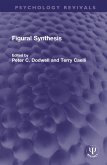Reasons for Realism
Selected Essays of James J. Gibson
Herausgeber: Reed, Edward; Jones, Rebecca
Schade – dieser Artikel ist leider ausverkauft. Sobald wir wissen, ob und wann der Artikel wieder verfügbar ist, informieren wir Sie an dieser Stelle.
Reasons for Realism
Selected Essays of James J. Gibson
Herausgeber: Reed, Edward; Jones, Rebecca
- Gebundenes Buch
- Merkliste
- Auf die Merkliste
- Bewerten Bewerten
- Teilen
- Produkt teilen
- Produkterinnerung
- Produkterinnerung
First published in 1982, this is a collection of the most important of James J. Gibsonà â â s essays on the psychology of perception. The editors have selected over 30 works dealing with topics as ecological optics, event perception, pictorial representation, and the conceptual foundations of psychology.
Andere Kunden interessierten sich auch für
![Reasons for Realism Reasons for Realism]() Reasons for Realism38,99 €
Reasons for Realism38,99 €![Operant Conditioning Operant Conditioning]() Derek E. BlackmanOperant Conditioning46,99 €
Derek E. BlackmanOperant Conditioning46,99 €![Child Abuse and Neglect Child Abuse and Neglect]() Child Abuse and Neglect45,99 €
Child Abuse and Neglect45,99 €![Figural Synthesis Figural Synthesis]() Figural Synthesis175,99 €
Figural Synthesis175,99 €![Concept Development in the Primary School Concept Development in the Primary School]() Peter LangfordConcept Development in the Primary School35,99 €
Peter LangfordConcept Development in the Primary School35,99 €![Psychological Processes and Advertising Effects Psychological Processes and Advertising Effects]() Psychological Processes and Advertising Effects47,99 €
Psychological Processes and Advertising Effects47,99 €![Social Behaviour in Animals (Psychology Revivals) Social Behaviour in Animals (Psychology Revivals)]() N. TinbergenSocial Behaviour in Animals (Psychology Revivals)34,99 €
N. TinbergenSocial Behaviour in Animals (Psychology Revivals)34,99 €-
-
-
First published in 1982, this is a collection of the most important of James J. Gibsonà â â s essays on the psychology of perception. The editors have selected over 30 works dealing with topics as ecological optics, event perception, pictorial representation, and the conceptual foundations of psychology.
Produktdetails
- Produktdetails
- Psychology Revivals
- Verlag: Taylor & Francis Ltd
- Seitenzahl: 474
- Erscheinungstermin: 18. Dezember 2019
- Englisch
- Abmessung: 186mm x 420mm x 28mm
- Gewicht: 826g
- ISBN-13: 9780367423421
- ISBN-10: 0367423421
- Artikelnr.: 58441675
- Herstellerkennzeichnung
- Libri GmbH
- Europaallee 1
- 36244 Bad Hersfeld
- gpsr@libri.de
- Psychology Revivals
- Verlag: Taylor & Francis Ltd
- Seitenzahl: 474
- Erscheinungstermin: 18. Dezember 2019
- Englisch
- Abmessung: 186mm x 420mm x 28mm
- Gewicht: 826g
- ISBN-13: 9780367423421
- ISBN-10: 0367423421
- Artikelnr.: 58441675
- Herstellerkennzeichnung
- Libri GmbH
- Europaallee 1
- 36244 Bad Hersfeld
- gpsr@libri.de
Edward Reed.
Foreword Eleanor J. Gibson. Acknowledgements. General Introduction Edward
Reed and Rebecca Jones. James J. Gibson: Autobiography. Part 1: Foundations
of Ecological Optics Edward Reed and Rebecca Jones. 1.1 Perception and
Judgement of Aerial Space and Distance as Potential Factors in Pilot
Selection and Training 1.2 Optical Motions and Transformations as Stimuli
for Visual Perception 1.3 The Information Contained in Light 1.4 Ecological
Optics 1.5 On Theories for Visual Space Perception 1.6 A History of the
Ideas Behind Ecological Optics: Introductory Remarks at the Workshop on
Ecological Optics 1.7 On the Analysis of Change in the Optic Array 1.8 What
is Involved in Surface Perception? Part 2: Movement and Motion: The
Perception of Action and Events Edward Reed and Rebecca Jones 2.1 A
Theoretical Field-Analysis of Automobile-Driving 2.2 The Ability to Judge
Distance and Space in Terms of the Retinal Motion Cue 2.3 Visually
Controlled Locomotion and Visual Orientation in Animals 2.4 The Uses of
Proprioception and the Detection of Propriospecific Information 2.5 The
Problem of Temporal Order in Stimulation and Perception 2.6 What Gives Rise
to the Perception of Motion? 2.7 The Change from Visible to Invisible: A
Study of Optical Transitions 2.8 The Problem of Event Perception 2.9
Ecological Physics, Magic, and Reality Part 3: The Perception of Pictures
Edward Reed and Rebecca Jones 3.1 Pictures as Substitutes for Visual
Realities 3.2 A Theory of Pictorial Perception 3.3 Pictures, Perspective,
and Perception 3.4 The Information Available in Pictures 3.5 On the Concept
of "Formless Invariants" in Visual Perception 3.6 Notes on Direct
Perception and Indirect Apprehension Part 4: Implications of Ecological
Realism Edward Reed and Rebecca Jones 4.1 What is a Form? 4.2 Perceptual
Learning: Differentiation or Enrichment? 4.3 The Concept of the Stimulus in
Psychology 4.4 The Useful Dimensions of Sensitivity 4.5 New Reasons for
Realism 4.6 Notes on Action 4.7 On the New Idea of Persistence and Change
and the Old Ideas that it Drives Out 4.8 The Myth of Passive Perception: A
Reply to Richards 4.9 Notes on Affordances. References. Complete
Bibliography of James J. Gibson. Author Index. Subject Index.
Reed and Rebecca Jones. James J. Gibson: Autobiography. Part 1: Foundations
of Ecological Optics Edward Reed and Rebecca Jones. 1.1 Perception and
Judgement of Aerial Space and Distance as Potential Factors in Pilot
Selection and Training 1.2 Optical Motions and Transformations as Stimuli
for Visual Perception 1.3 The Information Contained in Light 1.4 Ecological
Optics 1.5 On Theories for Visual Space Perception 1.6 A History of the
Ideas Behind Ecological Optics: Introductory Remarks at the Workshop on
Ecological Optics 1.7 On the Analysis of Change in the Optic Array 1.8 What
is Involved in Surface Perception? Part 2: Movement and Motion: The
Perception of Action and Events Edward Reed and Rebecca Jones 2.1 A
Theoretical Field-Analysis of Automobile-Driving 2.2 The Ability to Judge
Distance and Space in Terms of the Retinal Motion Cue 2.3 Visually
Controlled Locomotion and Visual Orientation in Animals 2.4 The Uses of
Proprioception and the Detection of Propriospecific Information 2.5 The
Problem of Temporal Order in Stimulation and Perception 2.6 What Gives Rise
to the Perception of Motion? 2.7 The Change from Visible to Invisible: A
Study of Optical Transitions 2.8 The Problem of Event Perception 2.9
Ecological Physics, Magic, and Reality Part 3: The Perception of Pictures
Edward Reed and Rebecca Jones 3.1 Pictures as Substitutes for Visual
Realities 3.2 A Theory of Pictorial Perception 3.3 Pictures, Perspective,
and Perception 3.4 The Information Available in Pictures 3.5 On the Concept
of "Formless Invariants" in Visual Perception 3.6 Notes on Direct
Perception and Indirect Apprehension Part 4: Implications of Ecological
Realism Edward Reed and Rebecca Jones 4.1 What is a Form? 4.2 Perceptual
Learning: Differentiation or Enrichment? 4.3 The Concept of the Stimulus in
Psychology 4.4 The Useful Dimensions of Sensitivity 4.5 New Reasons for
Realism 4.6 Notes on Action 4.7 On the New Idea of Persistence and Change
and the Old Ideas that it Drives Out 4.8 The Myth of Passive Perception: A
Reply to Richards 4.9 Notes on Affordances. References. Complete
Bibliography of James J. Gibson. Author Index. Subject Index.
Foreword Eleanor J. Gibson. Acknowledgements. General Introduction Edward
Reed and Rebecca Jones. James J. Gibson: Autobiography. Part 1: Foundations
of Ecological Optics Edward Reed and Rebecca Jones. 1.1 Perception and
Judgement of Aerial Space and Distance as Potential Factors in Pilot
Selection and Training 1.2 Optical Motions and Transformations as Stimuli
for Visual Perception 1.3 The Information Contained in Light 1.4 Ecological
Optics 1.5 On Theories for Visual Space Perception 1.6 A History of the
Ideas Behind Ecological Optics: Introductory Remarks at the Workshop on
Ecological Optics 1.7 On the Analysis of Change in the Optic Array 1.8 What
is Involved in Surface Perception? Part 2: Movement and Motion: The
Perception of Action and Events Edward Reed and Rebecca Jones 2.1 A
Theoretical Field-Analysis of Automobile-Driving 2.2 The Ability to Judge
Distance and Space in Terms of the Retinal Motion Cue 2.3 Visually
Controlled Locomotion and Visual Orientation in Animals 2.4 The Uses of
Proprioception and the Detection of Propriospecific Information 2.5 The
Problem of Temporal Order in Stimulation and Perception 2.6 What Gives Rise
to the Perception of Motion? 2.7 The Change from Visible to Invisible: A
Study of Optical Transitions 2.8 The Problem of Event Perception 2.9
Ecological Physics, Magic, and Reality Part 3: The Perception of Pictures
Edward Reed and Rebecca Jones 3.1 Pictures as Substitutes for Visual
Realities 3.2 A Theory of Pictorial Perception 3.3 Pictures, Perspective,
and Perception 3.4 The Information Available in Pictures 3.5 On the Concept
of "Formless Invariants" in Visual Perception 3.6 Notes on Direct
Perception and Indirect Apprehension Part 4: Implications of Ecological
Realism Edward Reed and Rebecca Jones 4.1 What is a Form? 4.2 Perceptual
Learning: Differentiation or Enrichment? 4.3 The Concept of the Stimulus in
Psychology 4.4 The Useful Dimensions of Sensitivity 4.5 New Reasons for
Realism 4.6 Notes on Action 4.7 On the New Idea of Persistence and Change
and the Old Ideas that it Drives Out 4.8 The Myth of Passive Perception: A
Reply to Richards 4.9 Notes on Affordances. References. Complete
Bibliography of James J. Gibson. Author Index. Subject Index.
Reed and Rebecca Jones. James J. Gibson: Autobiography. Part 1: Foundations
of Ecological Optics Edward Reed and Rebecca Jones. 1.1 Perception and
Judgement of Aerial Space and Distance as Potential Factors in Pilot
Selection and Training 1.2 Optical Motions and Transformations as Stimuli
for Visual Perception 1.3 The Information Contained in Light 1.4 Ecological
Optics 1.5 On Theories for Visual Space Perception 1.6 A History of the
Ideas Behind Ecological Optics: Introductory Remarks at the Workshop on
Ecological Optics 1.7 On the Analysis of Change in the Optic Array 1.8 What
is Involved in Surface Perception? Part 2: Movement and Motion: The
Perception of Action and Events Edward Reed and Rebecca Jones 2.1 A
Theoretical Field-Analysis of Automobile-Driving 2.2 The Ability to Judge
Distance and Space in Terms of the Retinal Motion Cue 2.3 Visually
Controlled Locomotion and Visual Orientation in Animals 2.4 The Uses of
Proprioception and the Detection of Propriospecific Information 2.5 The
Problem of Temporal Order in Stimulation and Perception 2.6 What Gives Rise
to the Perception of Motion? 2.7 The Change from Visible to Invisible: A
Study of Optical Transitions 2.8 The Problem of Event Perception 2.9
Ecological Physics, Magic, and Reality Part 3: The Perception of Pictures
Edward Reed and Rebecca Jones 3.1 Pictures as Substitutes for Visual
Realities 3.2 A Theory of Pictorial Perception 3.3 Pictures, Perspective,
and Perception 3.4 The Information Available in Pictures 3.5 On the Concept
of "Formless Invariants" in Visual Perception 3.6 Notes on Direct
Perception and Indirect Apprehension Part 4: Implications of Ecological
Realism Edward Reed and Rebecca Jones 4.1 What is a Form? 4.2 Perceptual
Learning: Differentiation or Enrichment? 4.3 The Concept of the Stimulus in
Psychology 4.4 The Useful Dimensions of Sensitivity 4.5 New Reasons for
Realism 4.6 Notes on Action 4.7 On the New Idea of Persistence and Change
and the Old Ideas that it Drives Out 4.8 The Myth of Passive Perception: A
Reply to Richards 4.9 Notes on Affordances. References. Complete
Bibliography of James J. Gibson. Author Index. Subject Index.








